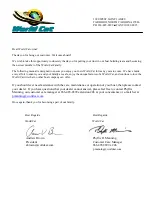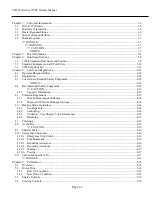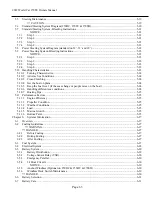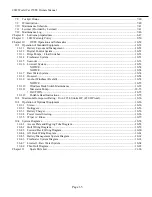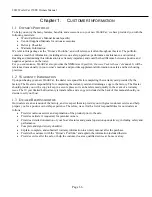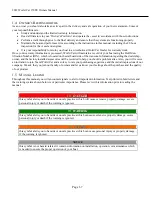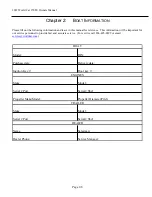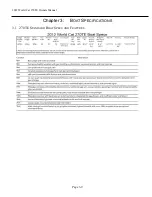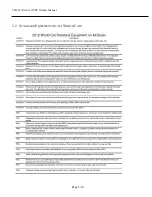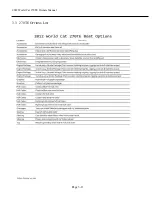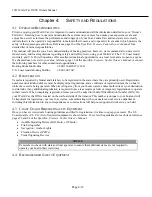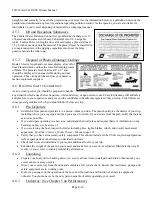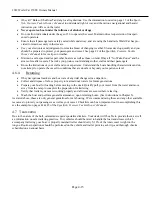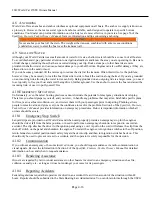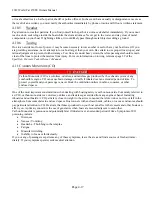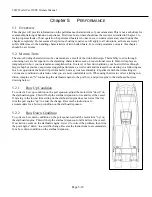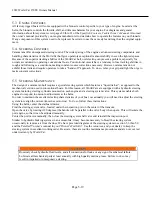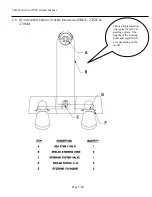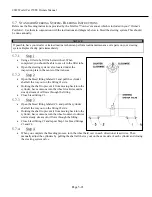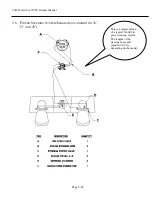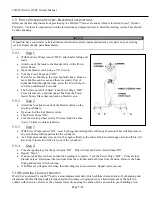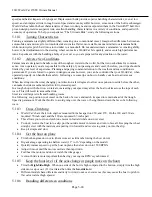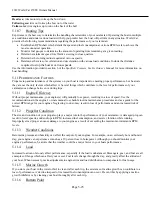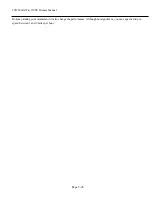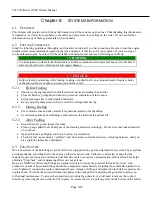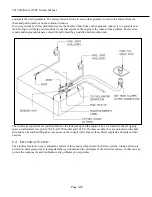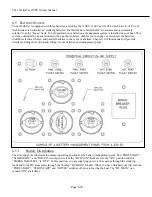
2012 World Cat 270TE Owners Manual
pamphlet, that normally received when registering your boat. Use the information below as a guideline, but study the
pamphlet and understand any local regulations regarding pollution control. As the operator, you are also liable for
individuals on your vessel disposing of materials in an improper manner.
4.5.1
Oil and Hazardous Substances
The Federal Water Pollution Control Act prohibits the discharge of oil
or hazardous substances which may be harmful into U.S. navigable
water. Vessels 26 feet in length and over must display a placard at least
5 by 8 inches, made of durable material. The placard must be installed in
a conspicuous place in the rigging compartments or near the bilge
pumps and state the following:
4.5.2
Disposal of Plastics/Dunnage/Garbage
Boats 26 feet in length and over must display a Save Our
Seas Placard which outlines the rules for dumping waste
offshore. The placards must be at least 4” x 9” and
should be displayed in an area visible during normal
operation. They can be purchased from your dealer or
marine equipment suppliers.
Page 4-14
4.6 B
OATING
S
AFETY
G
UIDELINES
As an owner/operator you should be prepared to handle
any situation which arises before departure, while underway, or upon return to dock. Careful planning will add safety
and pleasure to your experience and give you the confidence to handle emergencies if they develop. Listed below are
some general guidelines which you should follow before any trip:
4.6.1
Pre-Departure
•
Establish a float plan and provide it to a person whom you trust. The plan should give the details of your trip,
including where you are going and when you expect to return. If you deviate from the plan, notify that person
as soon as possible.
•
If you anticipate operating in a new area, understand the local rules and request charts or information on any
hazards you may not be aware of.
•
If you are towing the boat, inspect the trailer including tires, lights, brakes, winch, and overall mechanical
appearance.
Sportfish, Cruisers, Yachts Owner’s Manual page 105.
•
Verify that you have all necessary safety equipment. This should include all the USCG required equipment as
well as spare parts or other items you decided to include.
•
Check fuel levels and determine if you require additional fuel for your trip.
•
Examine the weight of the gear on your vessel and make sure you are not overloaded. Distribute the weight
evenly on your vessel to ensure predictable performance.
4.6.2
Launching
•
Prepare your boat prior to backing down, (i.e. secure all lose items, install garboard drain), then launch your
vessel and move away quickly.
•
Move your vessel away from the dock and complete a full system check. Ensure that electronics, pumps, and
safety equipment are in working order.
•
Instruct a passenger on the operation of the boat, and the location and function of all safety equipment
onboard. You should never be the only person capable of safely operating your vessel.
4.6.3
Underway: (See Chapter 5 on Performance)
Summary of Contents for 2011 270TE
Page 1: ...2012 OWNER S MANUAL 270TE ...
Page 11: ...2012 World Cat 270TE Owners Manual 3 2 STANDARD EQUIPMENT ON ALL WORLD CATS Page 3 10 ...
Page 12: ...2012 World Cat 270TE Owners Manual 3 3 270TE OPTIONS LIST Page 3 11 ...
Page 34: ...2012 World Cat 270TE Owners Manual 6 10 TYPICAL DIGITAL CONTROL DIAGRAM Page 6 33 ...
Page 35: ...2012 World Cat 270TE Owners Manual 6 11 TRADITIONAL ROCKER SWITCH DIAGRAM Page 6 34 ...
Page 43: ...2012 World Cat 270TE Owners Manual Page 7 42 ...
Page 44: ...2012 World Cat 270TE Owners Manual Page 7 43 ...
Page 45: ...2012 World Cat 270TE Owners Manual Page 7 44 ...
Page 46: ...2012 World Cat 270TE Owners Manual Page 7 45 ...
Page 48: ...2012 World Cat 270TE Owners Manual Chapter 8 HURRICANE PREPAREDNESS Page 8 47 ...
Page 49: ...2012 World Cat 270TE Owners Manual Page 8 48 ...
Page 50: ...2012 World Cat 270TE Owners Manual Page 8 49 ...


